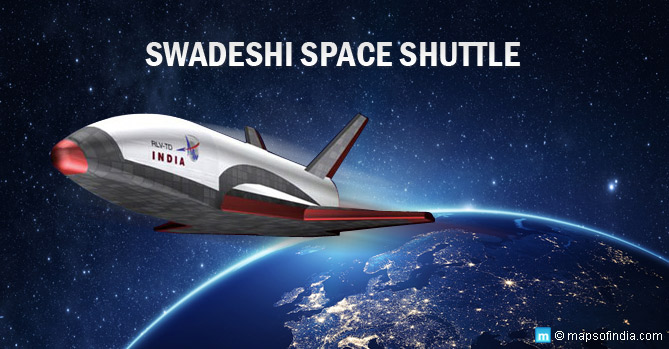On 23 May, India was able to successfully test the first ever space shuttle made in the country. It was launched at 7 AM from Sriharikota in Andhra Pradesh. The space shuttle was named Re-Usable Launch Vehicle – Technology Demonstrator or RLV-TD and was used as a scale model. The Indian Space Research Organization (ISRO) termed this mission successful after 20 minutes had passed since its launch. The space shuttle was 6.5 metre long and weighed around 1.75 tonnes. In all, around INR 95 crores were spent to build the device. 600 scientists built the space shuttle for more than five years at the Vikram Sarabhai Space Centre in Thiruvananthapuram.
Technology behind Swadeshi Space Shuttle
The indigenous space shuttle has been built using a reusable technology. This is a major factor considering the fact that it can reduce the future expense of launching such objects into space by 1000%. At present rates, you need at least 20,000 dollars per kilogram to send objects into outer space. The ISRO is looking to test at least a couple of such prototypes before it sends the final version into space.
Final version of present space shuttle
The final version is expected to be around 40 metre tall, which will make it six times bigger than the present model. It is expected to take off sometime in 2030. It is also expected to be able to carry Indian astronauts. Since this is the first flight of the RLV-TD, it is not expected to be recovered but the findings and data from the same will be used for the purpose of improving the designs and this will clear the way for the final model to be designed effectively.
Congratulations from Prime Minister
Narendra Modi congratulated the scientists at ISRO after the test was declared to be a successful one. In a tweet he termed the said shuttle to be the result of the hard work put in by ISRO’s scientists. Coming from a person of his stature this was undoubtedly one of the major accolades that the scientists would have received.
How was it launched?
The Swadeshi space shuttle was launched on a rocket engine that weighed nine tonnes. The engine had been designed in such a way that it would burn taking a lot of time and thus, in the process, help the winged body to be lifted vertically.
How did it fly?
Once it was launched the space shuttle flew at a height of 70 km. Afterwards it went on a free-gliding flight. In the starting phase its velocity was 500% more than that of sound. After completing its flight it landed in the Bay of Bengal, which is around 500 km from Sriharikota.
Why is this special?
This happens to be the first time that the apex space research body of India has been able to fly a winged body and was able to bring it back as well by just using a temporary runway. These are some of the reasons that have made this one so special. The future tests are supposed to be done in Sriharikota as well and it is expected that then an undercarriage will be used in order to make the shuttle land. India is right now the only country that is flying a winged spacecraft. Previously, only Russia had flown its space shuttle in 1989 and the US stopped operating these from 2011.
Competition
The New Shepherd rocket of Blue Origin and Falcon 9 of SpaceX have already been tested partially by using reusable space shuttles and it is expected that these can pose some competition for the RLV. This can very well be interpreted as a fight to gain the upper hand with regards to reusable technology in the context of space shuttles.
Other missions of ISRO
- Mission Gangayaan: A Manned Space Mission Of ISRO
- ISRO: Touching space and beyond
- ISRO to launch India’s first private-built satellite
- ISRO Tastes Success Again With the Launch of Cartosat-2 Satellite
- ISRO Successfully Launches The GSLV-Mk III On Monday
- ISRO launches South Asia Satellite GSAT-9 from Sriharikota
- ISRO Creates History; Launches 104 Satellites At a Go
- ISRO Planning 68 Satellites’ Launch in One Mission
- ISRO’s 20-Satellite Launch: Why It’s Special
- ISRO to launch GSAT-6 communication satellite on 27 August
- Secret behind ISRO’s next Interplanetary Mission
- The ISRO/Antrix – Devas Deal
- Mars Orbiter Mission (MOM) – A Success for ISRO
- The Launch of GSAT-29: All you need to know






